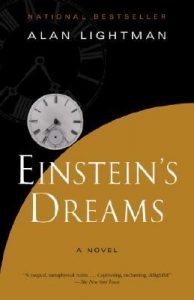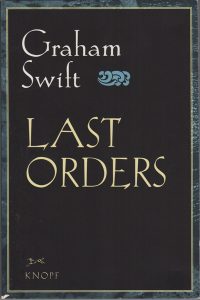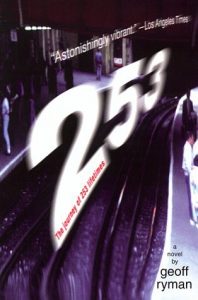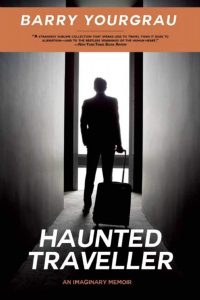
by Michael Loveday
In recent years, there’s been an exponential increase in the publication of novels-/novellas-in-flash. Is there a literary form that offers a closer approximation of contemporary Western existence? The novella-in-flash articulates a modern tension between two opposing worldviews. One sees the individual life as a ‘story’ (cf. narrative psychologist Dan McAdams: “Life stories are personality”), something with a past, present and future – an arc. Another, following Eastern religious traditions and the ‘mindfulness’ movement so popular recently in the West, sees life as “nothing more than a constant series of present moments to be experienced” (Richard Carlson). The tension between these opposites finds its most complete expression within the novella-in-flash / novel-in-flash: the form emphasises the importance of single, illuminated moments yet somehow suggests that a broader arc exists beyond these epiphanies, even as it wilfully deprives us of linear storyline.
However, despite its contemporary burst of popularity, the novel-/novella-in-flash is a form with roots. This group of mini-reviews of novels/novellas-in-flash all written before the term was coined is the third of three blogposts. If you missed the first eight reviews, go HERE and then HERE.
Let’s dive in.
- Alan Lightman – Einstein’s Dreams (1992)
 This work of speculative fiction, hypothesising multiple realities, surely is indebted to the microcosms in Calvino’s Invisible Cities (1972). Aside from a brief, recurring frame narrative depicting Einstein and his friend Besso, each of the thirty main chapters here consists of a possible “world” (some version of Berne, Switzerland) with its own idiosyncratic rules about time – how it’s experienced, how it impacts upon people’s feelings, behaviour. These worlds are actually dreams that the Einstein character has had: time as a circle (the world endlessly repeats itself and only a few, unhappy people know); time as a flow of water (people get caught in tributaries, dragged towards the past); mechanical vs. bodily time (some ignore clocks to follow the rhythms of moods and desires; some ignore their bodies, are rigidly scientific). Lightman explains the premise for each time-system plainly at the beginning of each chapter. The delight, then, comes in seeing how he extrapolates from this starting point. Each time-system induces its own social rules and moral values – Lightman is harnessing scientific logic and world-building for the aim of social critique. And although Alan Lightman is a physicist, theory doesn’t inhibit readability here. Descriptions have the vivid, simple quality of impressionist paintings. It feels like generalised fable (stories are populated with types rather than specific, identifiable characters), written with a sad recognition of the interactions of fate, destiny and individual will. It’s no surprise this fusion of literature, philosophy and science has been assigned as campus-wide reading for undergraduates at some universities. Lightman exhibits a kind of all-encompassing compassion, channelling the impartial indifference of the Great Artist at work on a grand canvas.
This work of speculative fiction, hypothesising multiple realities, surely is indebted to the microcosms in Calvino’s Invisible Cities (1972). Aside from a brief, recurring frame narrative depicting Einstein and his friend Besso, each of the thirty main chapters here consists of a possible “world” (some version of Berne, Switzerland) with its own idiosyncratic rules about time – how it’s experienced, how it impacts upon people’s feelings, behaviour. These worlds are actually dreams that the Einstein character has had: time as a circle (the world endlessly repeats itself and only a few, unhappy people know); time as a flow of water (people get caught in tributaries, dragged towards the past); mechanical vs. bodily time (some ignore clocks to follow the rhythms of moods and desires; some ignore their bodies, are rigidly scientific). Lightman explains the premise for each time-system plainly at the beginning of each chapter. The delight, then, comes in seeing how he extrapolates from this starting point. Each time-system induces its own social rules and moral values – Lightman is harnessing scientific logic and world-building for the aim of social critique. And although Alan Lightman is a physicist, theory doesn’t inhibit readability here. Descriptions have the vivid, simple quality of impressionist paintings. It feels like generalised fable (stories are populated with types rather than specific, identifiable characters), written with a sad recognition of the interactions of fate, destiny and individual will. It’s no surprise this fusion of literature, philosophy and science has been assigned as campus-wide reading for undergraduates at some universities. Lightman exhibits a kind of all-encompassing compassion, channelling the impartial indifference of the Great Artist at work on a grand canvas.
- Last Orders, by Graham Swift (1996)
 Graham Swift clinched the Booker Prize for this novel-in-flashes in 1996. A series of monologues mostly by four working-class men (Lenny, Vic, Ray and Vince) driving from London to Margate to scatter the ashes of Jack (their friend and Vince’s father). The plot in real time is relatively thin – a fight, a trip to a war memorial and to Canterbury Cathedral. But as the journey proceeds, we simultaneously travel backwards into the past as the men reminisce about experiences revolving around Jack. The backstories about their relationships slowly lay bare betrayals and secrets alongside happier memories. Despite an initial overwhelm as we grapple with multiple voices, the story’s terrain slowly becomes familiar and at the same time the characterisations become increasingly rich and complex: flaws and mixed motives are exposed. Dialogue dominates while the men are in the car, then gradually the chapters deliver vivid descriptions of landscapes they’re moving through. The voices – whether undertaker, car salesman, or professional gambler – feel pitch-perfect, full of vitality, achieving a plain-spoken gravity and dignity. The characters grapple with grief, ponder what death means, and reflect upon loyalty, vulnerability and responsibility and luck. There’s an emphasis on male voices but women are part of the book’s texture too, increasingly dominating the web of interrelationships and picking up the narration. A crucial element is Jack’s treatment of his disabled daughter (abandoned to a care home and visited only by his wife), and the impact this has. Several of the men were bonded as soldiers during WWII, and while the book is set at the end of the 20th century, there’s an air of nostalgia throughout – it’s an elegiac, tender hymn to the generation that lived through the war and to their descendants, a hymn to memory, a hymn to working class experience.
Graham Swift clinched the Booker Prize for this novel-in-flashes in 1996. A series of monologues mostly by four working-class men (Lenny, Vic, Ray and Vince) driving from London to Margate to scatter the ashes of Jack (their friend and Vince’s father). The plot in real time is relatively thin – a fight, a trip to a war memorial and to Canterbury Cathedral. But as the journey proceeds, we simultaneously travel backwards into the past as the men reminisce about experiences revolving around Jack. The backstories about their relationships slowly lay bare betrayals and secrets alongside happier memories. Despite an initial overwhelm as we grapple with multiple voices, the story’s terrain slowly becomes familiar and at the same time the characterisations become increasingly rich and complex: flaws and mixed motives are exposed. Dialogue dominates while the men are in the car, then gradually the chapters deliver vivid descriptions of landscapes they’re moving through. The voices – whether undertaker, car salesman, or professional gambler – feel pitch-perfect, full of vitality, achieving a plain-spoken gravity and dignity. The characters grapple with grief, ponder what death means, and reflect upon loyalty, vulnerability and responsibility and luck. There’s an emphasis on male voices but women are part of the book’s texture too, increasingly dominating the web of interrelationships and picking up the narration. A crucial element is Jack’s treatment of his disabled daughter (abandoned to a care home and visited only by his wife), and the impact this has. Several of the men were bonded as soldiers during WWII, and while the book is set at the end of the 20th century, there’s an air of nostalgia throughout – it’s an elegiac, tender hymn to the generation that lived through the war and to their descendants, a hymn to memory, a hymn to working class experience.
- 253, by Geoff Ryman (1998; originally published, with variations, on the internet, 1996)
 The 253 mostly one-page chapters in this book are more like character sketches than stories. Each one describes a passenger on a specific, fictional London Underground train on January 11th 1995. Each “story” is structured in exactly the same way – three sections, delivering (1) “Outward appearance” (clothing and physical description), (2) “Inside information” (important context about the person’s life that we are privy to, thanks to the author), and lastly (3) “What she / he is doing or thinking”, where the thinnest of story scenarios is usually developed, revealing the internal desires, motives and conflicts of each individual. “253” refers to the number of passengers that would be seated on a tube train if all its seats were full – an artificial device of course, given that most Underground trains are rarely busy to exactly 100% seated capacity. It’s a mammoth, astonishing project – an attempt to represent the population of London, with all its demographic and cultural diversity, within one book. Additional pages offer hilarious footnotes about the history of London – its architecture and its cultural past – and fake advertisements satirising wannabe-authors. We do need these interludes, because there is a relentless intensity to reading page after page structured in the same way, even though the character portraits are often amusing. As the book hurtles to its tragic conclusion, the cumulative invention is astounding, despite the formal repetition. One could imagine whole novels being written based on each page, Ryman’s characterisations are so specific and believable. 253 originally appeared online, with hyperlinks connecting details of the character’s lives. Physical book form deprives us of a crucial element of Ryman’s creative vision. Yet 253 remains a thing of wonder – maddening, because of its persistent central device, yet impressive and utterly unique for the same reason.
The 253 mostly one-page chapters in this book are more like character sketches than stories. Each one describes a passenger on a specific, fictional London Underground train on January 11th 1995. Each “story” is structured in exactly the same way – three sections, delivering (1) “Outward appearance” (clothing and physical description), (2) “Inside information” (important context about the person’s life that we are privy to, thanks to the author), and lastly (3) “What she / he is doing or thinking”, where the thinnest of story scenarios is usually developed, revealing the internal desires, motives and conflicts of each individual. “253” refers to the number of passengers that would be seated on a tube train if all its seats were full – an artificial device of course, given that most Underground trains are rarely busy to exactly 100% seated capacity. It’s a mammoth, astonishing project – an attempt to represent the population of London, with all its demographic and cultural diversity, within one book. Additional pages offer hilarious footnotes about the history of London – its architecture and its cultural past – and fake advertisements satirising wannabe-authors. We do need these interludes, because there is a relentless intensity to reading page after page structured in the same way, even though the character portraits are often amusing. As the book hurtles to its tragic conclusion, the cumulative invention is astounding, despite the formal repetition. One could imagine whole novels being written based on each page, Ryman’s characterisations are so specific and believable. 253 originally appeared online, with hyperlinks connecting details of the character’s lives. Physical book form deprives us of a crucial element of Ryman’s creative vision. Yet 253 remains a thing of wonder – maddening, because of its persistent central device, yet impressive and utterly unique for the same reason.
- Haunted Traveller: An Imaginary Memoir, by Barry Yourgrau (1999)
 The final novel-in-flash in this list may be the one that is most like a story collection. It’s a series of first-person, present-tense narratives, often up to five or six pages long, with no significant recurring characters other than the narrator, who embarks on a series of journeys through ever-changing locations. The “thread” is the theme itself of travel and search rather than the storyline, settings, or other characters involved. Most of those journeys are physical – trains, boats, treks – and the heavily action-driven chapters often read like adventure tales. Yet it’s delivered as affectionate parody – the travel is so endless and apparently unresolvable. Despite the humour, there’s an existential undertow: “The cave wind blows through me, the breath of absence.” (p.179). This is especially true in chapters like ‘Interruption’ where the narrator encounters a manifestation of his lonely, alienated inner self. The stories are fraught with illness, uncertainty and peril (a remarkable proportion feature guns). Yourgrau adopts a kind of melodramatic, neo-Gothic style and nightmarish tales of ghosts and fantasies unfurl with unpredictable dream-logic – such as the narrator who is decapitated then continues to narrate the story. Some of the rich landscape descriptions read like Joseph Conrad on steroids: “A few ragtag palms preside over a marshy lump in the ocean’s quaking immensity… At night I dwindle to a whimpering dark speck beneath the glittering behemoths of the constellations.” (p.84) By the end, when the narrator decides to “give up my wandering life” (p.195) it’s almost a disappointment, even though as a way of bringing the novel towards a close, it’s perhaps unavoidable. Haunted Traveller is a hilarious, picaresque novel-in-flash of restless movement and encounter, delivered by an unreliable narrator. As a postmodern homage to Gothic fiction, adventure stories and quest narratives, it’s yet more proof of the novel-/novella-in-flash’s rich adaptability.
The final novel-in-flash in this list may be the one that is most like a story collection. It’s a series of first-person, present-tense narratives, often up to five or six pages long, with no significant recurring characters other than the narrator, who embarks on a series of journeys through ever-changing locations. The “thread” is the theme itself of travel and search rather than the storyline, settings, or other characters involved. Most of those journeys are physical – trains, boats, treks – and the heavily action-driven chapters often read like adventure tales. Yet it’s delivered as affectionate parody – the travel is so endless and apparently unresolvable. Despite the humour, there’s an existential undertow: “The cave wind blows through me, the breath of absence.” (p.179). This is especially true in chapters like ‘Interruption’ where the narrator encounters a manifestation of his lonely, alienated inner self. The stories are fraught with illness, uncertainty and peril (a remarkable proportion feature guns). Yourgrau adopts a kind of melodramatic, neo-Gothic style and nightmarish tales of ghosts and fantasies unfurl with unpredictable dream-logic – such as the narrator who is decapitated then continues to narrate the story. Some of the rich landscape descriptions read like Joseph Conrad on steroids: “A few ragtag palms preside over a marshy lump in the ocean’s quaking immensity… At night I dwindle to a whimpering dark speck beneath the glittering behemoths of the constellations.” (p.84) By the end, when the narrator decides to “give up my wandering life” (p.195) it’s almost a disappointment, even though as a way of bringing the novel towards a close, it’s perhaps unavoidable. Haunted Traveller is a hilarious, picaresque novel-in-flash of restless movement and encounter, delivered by an unreliable narrator. As a postmodern homage to Gothic fiction, adventure stories and quest narratives, it’s yet more proof of the novel-/novella-in-flash’s rich adaptability.
_______________________________
 Michael Loveday’s novella-in-flash Three Men on the Edge (V. Press, 2018) was shortlisted for the 2019 Saboteur Award for Best Novella. He also writes poetry, with a pamphlet He Said / She Said published by HappenStance Press (2011). He has been judge of the 2019 and 2020 Novella-in-Flash competitions at Bath Flash Fiction Award. In addition to working as an editor for novellas-in-flash, he helps writers incubate ideas for novellas through an online one-to-one course: https://novella-in-flash.com/.
Michael Loveday’s novella-in-flash Three Men on the Edge (V. Press, 2018) was shortlisted for the 2019 Saboteur Award for Best Novella. He also writes poetry, with a pamphlet He Said / She Said published by HappenStance Press (2011). He has been judge of the 2019 and 2020 Novella-in-Flash competitions at Bath Flash Fiction Award. In addition to working as an editor for novellas-in-flash, he helps writers incubate ideas for novellas through an online one-to-one course: https://novella-in-flash.com/.

 The core workshop of SmokeLong Fitness is all in writing, so you can take part from anywhere at anytime. We are excited about creating a supportive, consistent and structured environment for flash writers to work on their craft in a community. We are thrilled and proud to say that our workshop participants have won, placed, or been listed in every major flash competition. Community works.
The core workshop of SmokeLong Fitness is all in writing, so you can take part from anywhere at anytime. We are excited about creating a supportive, consistent and structured environment for flash writers to work on their craft in a community. We are thrilled and proud to say that our workshop participants have won, placed, or been listed in every major flash competition. Community works.